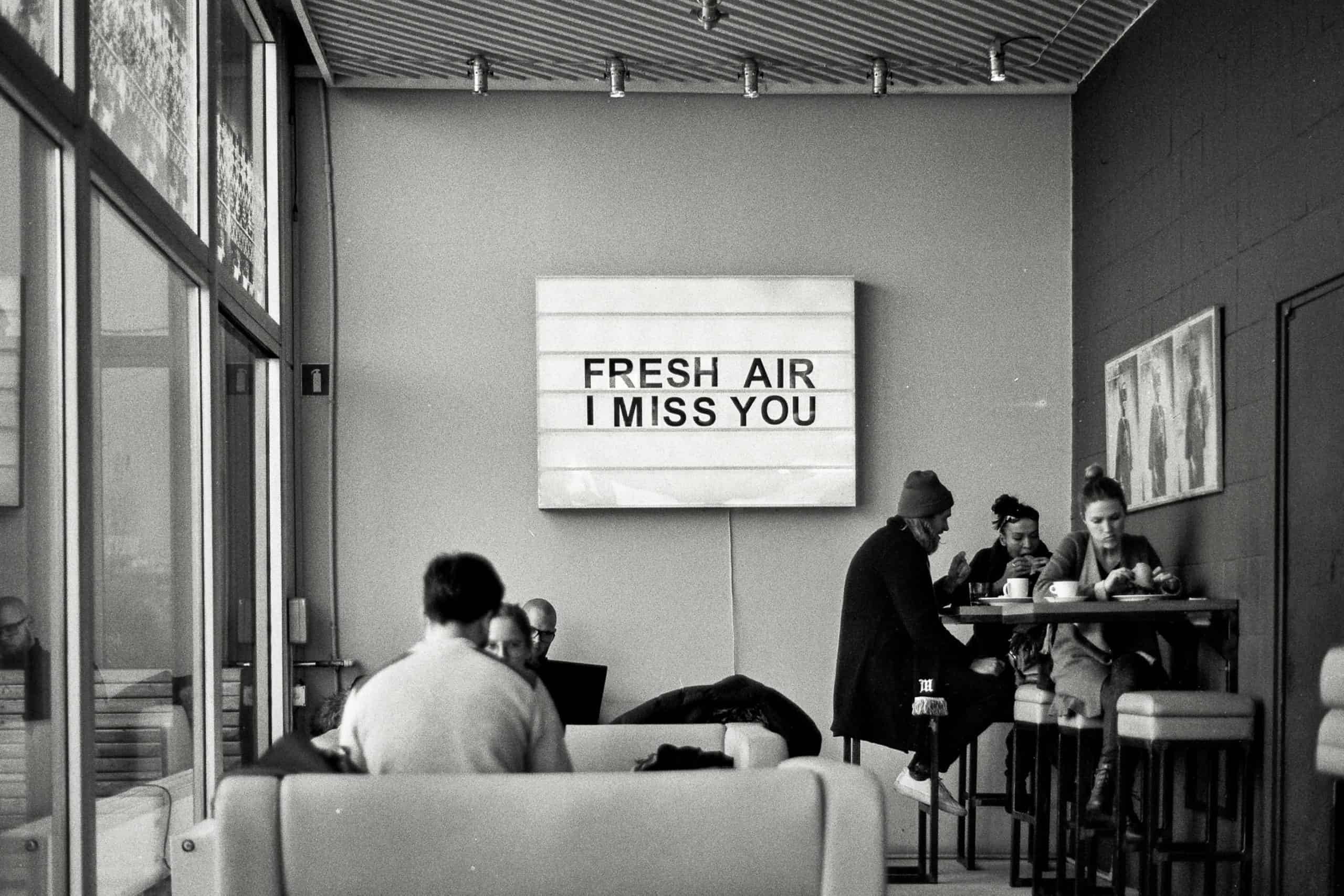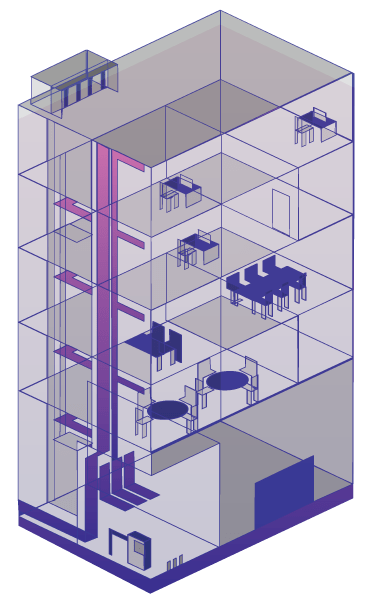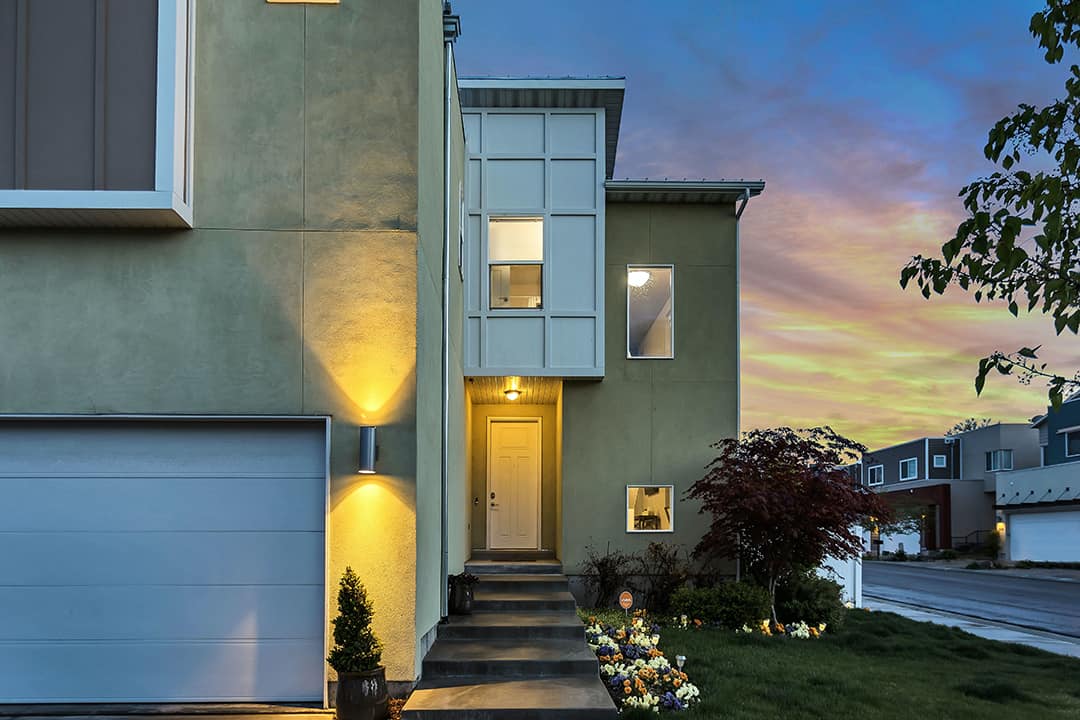

The great fresh air competition
by Paul Grahovac
Building owners and operators compete for office tenants on such things as location, rent, energy use, amenities and upgrades. Now they will be competing on fresh air.
Recent BOMA articles have emphasized that notwithstanding the success of vaccination and the reduction in coronavirus spread, workers remain concerned that the main means of transmitting respiratory diseases is human breath. From that, they are rightly concluding that dilution and removal using increased outdoor air in the HVAC mix is the best way to avoid spreading such disease.
“Getting Back to Work 3.0: Best Practices for Managing Commercial Buildings During COVID-19 Recovery” states: “To the greatest extent possible, eliminate recirculated air.” Eliminating all recirculated air would mean using 100% outdoor air in the HVAC system. Pre-pandemic, most facility managers ran about 0.5 Air Changes per Hour (ACH) (about 2.6% fresh air) through their HVAC systems rather than the approximately 3 ACH 4 (about 16% fresh air) recommended by ASHRAE. Pandemic researchers at the University of Colorado have suggested 30%. Although far from 100%, 30% is still a significant increase over pre-pandemic levels. It also represents a substantial increase in energy costs to condition the additional fresh air – unless a building is one of the very few to have been constructed with a very high-performing air barrier system -- or can be retrofitted to so perform. Relying on leaky building envelopes to supply fresh air interferes with HVAC flow designs, requires conditioning significantly more air than necessary, and may cause unintended air flows that spread the aerosol virus particles.
Download your free e-book from BOMA and PROSOCO
Enter your email for a free download of How to: Leverage Building Technology for Post-Pandemic Success from the Building Owners and Managers Association International.
“Healthy Environments in the Age of COVID-19” tells us: “Focusing on indoor-outdoor air exchange rates and making sure they are pulling enough fresh air in to adequately ventilate the building are important guidelines… Experts say building owners will continue to invest in the basics of a healthy asset, including air quality, water quality, ventilation and moisture—and these are not expensive investments. In fact, healthy buildings are a good business decision… ‘Building performance drives human performance drives business performance.’…While there’s no such thing as zero risk, building owners and property managers can reduce that risk and take measures to help ease tenants’ anxiety about their built environments.”
“Meanwhile, heating, ventilating and air-conditioning (HVAC) systems are being upgraded everywhere to bring in more fresh air and provide more ventilation to help prevent the spread of the coronavirus. Even available apps can communicate indoor air quality levels as individuals walk into a building.” One can easily imagine that very soon, employees will be routinely checking the air quality in their offices, and that will bring the percent of fresh air into stark focus.

“In the simple, pre-pandemic days, ‘everyone expected and assumed air quality and humidity were being addressed in their buildings,’” says Ilan Zachar, senior vice president and chief technology officer for Carr Properties. ‘Now, people are going to require more information.'… “Carr’s commitment to environmental well-being is evidenced in The Wilson, a 362,643-square-foot Class A office property in Bethesda, Maryland. Boasting ‘an advanced HVAC system that circulates 75 percent outside air throughout the building,’ The Wilson maintains a focus on sustainability, health and well-being that was instrumental in drawing Walker & Dunlop into a 59,000-foot relocation of its headquarters.”
Increasing outdoor air in your HVAC mix
Increasing outdoor air in your HVAC system has been proven to dilute and remove Coronavirus aerosols, and can provide the same effect as vaccinating building occupants.

Properly sealing walls and windows
Air quality control is much easier with fewer leaks. Ensuring a building’s walls and windows are properly sealed helps conditioned air work and flow as designed.
Air sealing also reduces energy cost
Air sealing also reduces energy use and cost to pay for conditioning the increased outdoor air.
How quickly will you realize your ROI?
The cost of an energy retrofit or building envelope upgrade divided by annual energy savings = your payback period. Many estimates calculate a ROI realized in less than five years.
More benefits than just saving $$$
Added benefits include occupant health and thermal comfort, prevention of hidden condensation, noise reduction, allergen reduction, dust reduction and prevention of water intrusion and moisture.
A Breath of Fresh Air
According to John Silustri in his BOMA article, "Healthy environments in the age of COVID-19," "While so much of environmental well-being today goes beyond the mechanics of a building’s infrastructure, indoor air quality still remains at the center of the storm or, in this case, the virus. In fact, in the recent national survey of building occupants conducted jointly by BOMA International, Yardi and Brightline Strategies, maximized fresh air ranked first in respondents’ perceived notion of protocols that bring building value (see 'Survey Says: The Office Remains a Driver of Business Success')."
However, fresh air comes with a cost. The HVAC and infectious disease communities are well aware that higher levels of fresh-air ventilation reduce coronavirus transmission, but they are concerned the energy cost of increasing fresh-air ventilation will not be accepted by building owners.
Typically, infectious disease and HVAC professionals are not experts in energy savings from building envelope airtightness and related construction and retrofit opportunities. Building owners and managers will be looking to their facility managers to strike a balance between adding HVAC fresh air and building-envelope efforts to control energy costs. This can be preliminarily evaluated without bringing in testing and retrofit companies. Building operation training specialists emphasize the importance of facility managers equipping themselves with thermal imaging cameras to identify building envelope air leakage as well as to support numerous other maintenance and building management objectives.
Similarly, “BOMA International has actively promoted benchmarking through EPA’s ENERGY STAR Portfolio Manager as the key first step to understanding a building’s energy use and providing the necessary data to monitor performance, measure improvements, and implement cost‐effective improvements in buildings.”
“Nearly 25% of U.S. commercial building space is already actively benchmarking in Portfolio Manager, making it the industry-leading benchmarking tool.”
Evaluation of airtightness using thermal imaging and comparing energy use with benchmarking form the basis of the decision whether to involve airtightness testing specialists and retrofit contractors. These experts assess the feasibility of efforts to improve the performance of the air barrier system that was installed during construction. Manufacturers of air-sealing products have field experts operating across the country, and they are an excellent source of referrals to identify testing and air-sealing companies.
The energy savings of a high-performing air-barrier system achieved during original construction or by a building retrofit can be substantial. One study found the annual savings to be $0.15 per square foot of floor area.
![]()

